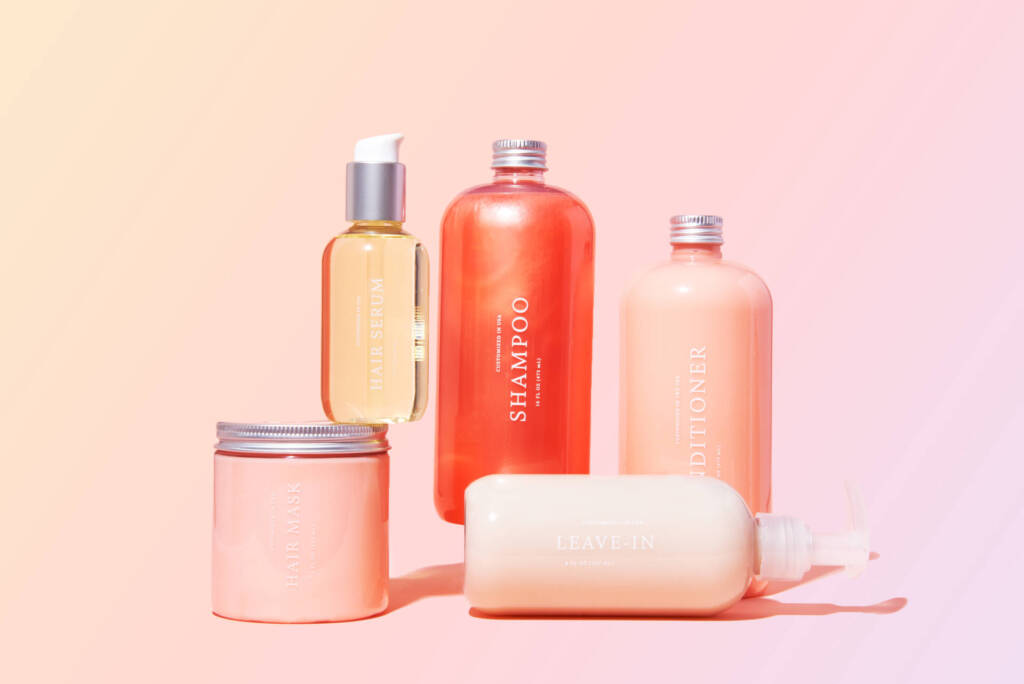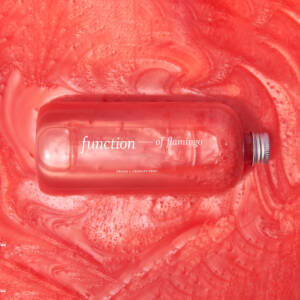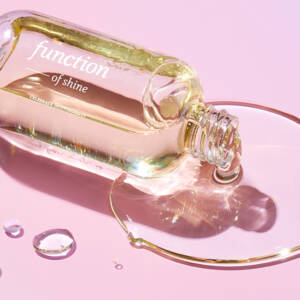Anyone with 3a hair has likely wondered if they belong to the wavy hair crew or the curly girl club at least once in their life. Not to mention, there is a perplexing plethora of curl-friendly products, from sulfate-free shampoos to co-washes, giving you decision paralysis.
That’s why we came up with this guide to illuminate your hair journey going forward. Using the hair typing system, you will learn what makes up 3a hair (aka curly hair) and how to properly care for your mane. Plus, if you’re new to the Curly Girl Method* (CGM), you’ll discover why it’s an improved way of life for well-defined, healthy-looking curls.
The Hair Typing System Is Your Guiding Star
The hair typing system is incredibly useful for ID-ing which type 3 hair you belong to:
- 3a hair (the star of this post!)
- 3b hair
- 3c hair
Understanding your exact curl type is so much more than flexing your mane. Your curl pattern tells you the products your hair loves and those you should avoid. It also determines the best way to apply products so your tresses can get the most out of them.
3a Hair: All You Need To Know
Type 3a hair is characterized by well-defined spiral curls that are typically the size of a piece of sidewalk chalk. Although the circumference of 3a curls is wider than that of 3b and 3c hair, it can be difficult to tell the three curl types apart. But don’t worry, we have a few tricks up our sleeve.
Firstly, 3a hair looks like the deep waves in wavy hair types when it’s wet. In comparison, damp 3b and 3c hair still retain their ringlets. Secondly, 3a curls are less voluminous than 3b to 4c hair. This means they are the least prone to frizziness and poofiness of all the curly and coily hair types. But that’s not to say 3a hair is entirely immune to the external elements. Humidity, pollution, and ultraviolet rays can still push your fibers into SOS mode.
Because 3a curls have less volume, your mane may appear flat at times, particularly after you’ve doused your strands with heavy creams and mousses. Think of the product buildup as the proverbial needle that deflates your bouncy curls.
Another major challenge for 3a curls is dry hair. Keep in mind that all curly hair types struggle with dryness, some more than others. Due to the curly trajectory of type 3a hair, natural oils from your scalp have a hard time making their way to the ends. Unfortunately, drying haircare ingredients like sulfates and parabens can worsen the issue.
As if that isn’t bad enough, your natural curls also put you at high risk of breakage. This, coupled with the never-ending dryness, is probably why your bathroom floor is littered with hair after each brushing session.
Making CGM Work for 3a Hair and Individual Porosity
Knowing what your 3a curls are up against is essential in forming a game plan to care for your locks. The best place to start is by basing your curly hair routine on the Curly Girl Method. In case you haven’t heard of it, here’s a quick overview on the topic:
- Reset: A reset means cleansing with a clarifying shampoo to get rid of any lingering buildup. Your scalp and mane transform into a clean slate for other haircare products to sink in better. Schedule a reset once every few weeks, or however often your hair needs it. If you’ve recently used silicone-based products, a reset is handy in clearing leftover residues.
- Cleanse: Oh, boy! Now we’re really talking. Because curly hair types are particularly vulnerable to harsh, drying shampoos, CGM prioritizes CG-friendly cleansing techniques like co-washing and low-poo. We’ll get into the specifics later. All you need to know now is that these tactics use sulfate-free formulations to avoid dehydrating your moisture-starved strands.
- Condition: Much of the CGM is dedicated to wash-off, leave-in, and deep conditioners for maximum hydration all day, every day. Most importantly, they are your secret weapon in bringing down the ouch factor when detangling those knots and snarls.
- Dry: Since curly hair fibers are more fragile than other hair types (read: more prone to breakage), gentleness is the key when drying your hair post-shower. We’ll show you how to plop, scrunch, and pineapple your natural hair with minimal damage.
After getting the basics of CGM down pat, there’s one more thing to take note of — your hair porosity, which refers to how well your mane absorbs and retains moisture. Low porosity hair has difficulty absorbing water due to fewer pores in the hair cuticles. Meanwhile, high porosity hair loses water faster than it would like, courtesy of a high pore count.
But how does porosity impact your curly hair routine? Simple: it dictates the types of hair products you should apply to your mane:
- Low porosity hair does well with lightweight, hydrating products to minimize buildup. Go for humectants (like aloe vera) and emollients (think argan oil).
- High porosity hair needs moisturizing products with a rich yet lightweight texture to seal in moisture. In other words, emollients and occlusives like coconut oil are your BFFs.
At this point, you may feel a little overwhelmed as you try to put all of this information into real-life practice. Don’t fret — you’re in good hands. All you need to do is sit back and relax as we show you how in the next section.
3 Easy Tips to Achieve the Ideal 3a Hair
Aside from the basic principles of less washing and more conditioning, here are three important tips to put your best curls forward.
1. Find the Wash Technique That Works for You
Many curly-haired gals swear by a sulfate-free shampoo and conditioner (like the ones crafted by Function of Beauty) for clearing out buildup on your wash days. But if you find your tresses are too dry for this low-poo method — especially for high porosity hair that is damaged or color-treated — there is co-washing.
This cleansing technique is widely known as conditioner-only washing and the no-poo method. In essence, it relies on a conditioning formula to wash your mane. The good news is that a co-wash isn’t as drying or harshly cleansing as a shampoo. Instead, it gently cleanses your scalp of buildup while hydrating your hair, so your fibers never feel stripped of their natural oils. Plus, detangling in the shower will be much smoother.
Instead of going with any regular conditioner, which typically lacks the cleansing agents needed to properly remove buildup, try Function of Beauty’s custom co-wash. It’s CGM-approved and free of silicone and drying alcohols. You can formulate it to suit your unique 3a curls, whether it’s to maintain natural curl definition or combat frizz. Check out the full range of ingredients tailored to your hair goals.
2. Master Second-Day (And Even Third-Day) Curls
Curls that last beyond the first day of washing need not be a 3a hair fantasy. Here’s what you need to do:
- Step 1: After cleansing your hair on wash day (or reset day), gently scrunch it to remove excess water and encourage curl formation. Next, load up with your styling product of choice. Prime examples include a leave-in conditioner and a hair serum.
- Step 2: Plop your hair to absorb the excess water without deflating your curls, inciting frizz, or risking breakage that comes with towel-rubbing. Hop over to our step-by-step tutorial on plopping if you’re new to the game. Remember to scrunch your hair afterward to break up any crunchy bits of product residue.
- Step 3: At night, pineapple your hair before you sleep. It’s a protective hairstyle that piles your curls into a loose, high bun. This way, you’re less likely to flatten or tangle your curls when tossing and turning in bed.
- Step 4: Once you wake up, release your hair from its bun. Check its appearance in the mirror and see if it needs any reviving. If it does, lightly spritz your curls with a refreshing hair mist or a DIY concoction of water and conditioner.
Voila! You now have vivacious, buoyant curls instead of limp, frizzy locks. If you only wash your hair once a week or so, skip the shampoo (or co-wash) and repeat steps 1-4 as frequently as needed.
3. Prioritize Lightweight Hydration Out of the Shower
To promote volume and curl definition while keeping flyaways at bay, use lightweight yet hydrating products when you’re out of the shower.
A good option is our custom leave-in treatment, an ultra-lightweight conditioning cream that can moisturize your locks and offer a smoother look to your hair texture. We recommend adding the “curl definition” hair goal to maximize your swirls. Apply it to wet hair right after your shower so you can detangle with ease.
To get the most out of your leave-in, customize it based on your hair’s porosity level. For example, low porosity hair may prefer the “soothe scalp” and “volumize” hair goals to tackle buildup and flatness. Meanwhile, high porosity hair will want to step up the moisture level with the “deep condition” and “hydrate” goals.
Love Your 3a Hair the Way It’s Meant to Be
On some days, it seems like straight hair types have it way easier than curly hair gals — just shampoo, condition, rinse, and repeat. But no hair type is perfect. Look on the bright side: 3a hair is blessed with voluminous curls that need no curling iron and blow-dryer to achieve.
Of course, you’ll have to put in the work to keep your swirls looking their best. Use the Curly Girl Method as your creed while keeping your hair porosity in mind. Then, practice the three tips we’ve shared above to perfect your haircare routine for 3a curls. If you need help picking out the right hair products for your curl type, take our hair quiz today.
*Disclaimer: Function of Beauty is not associated with Lorraine Massey, the Curly Girl Method (“CGM”), or Curly Girl: The Handbook. Reference to the Curly Girl Method is provided is for informational purposes only and is accurate to the best of our knowledge, however it is not guaranteed. Product formulas can change at any time.





